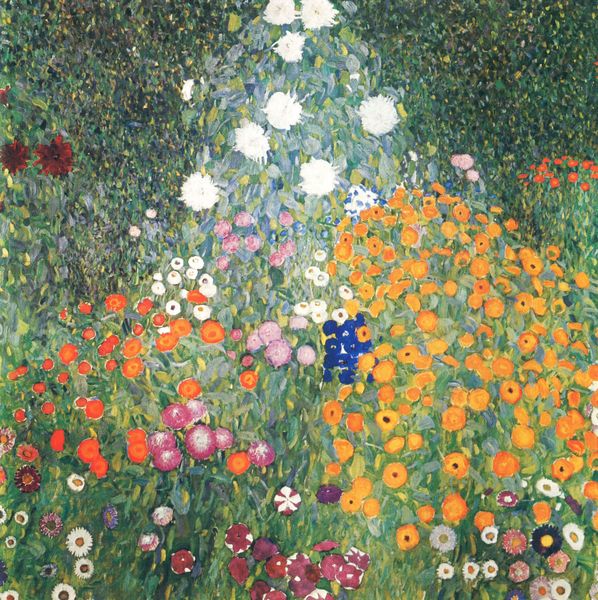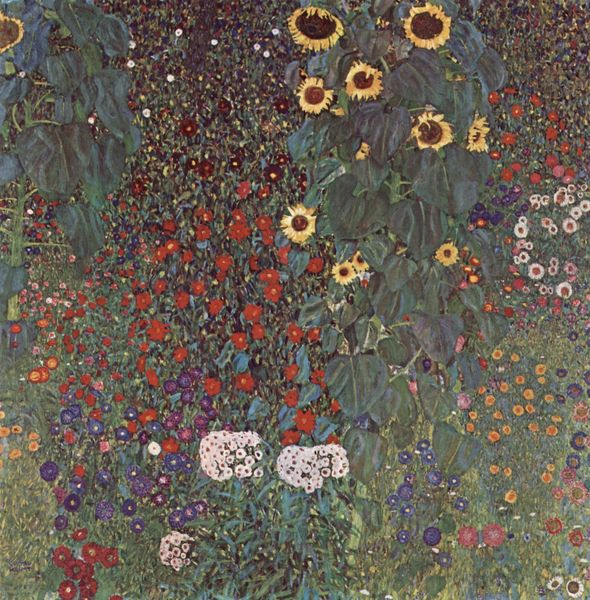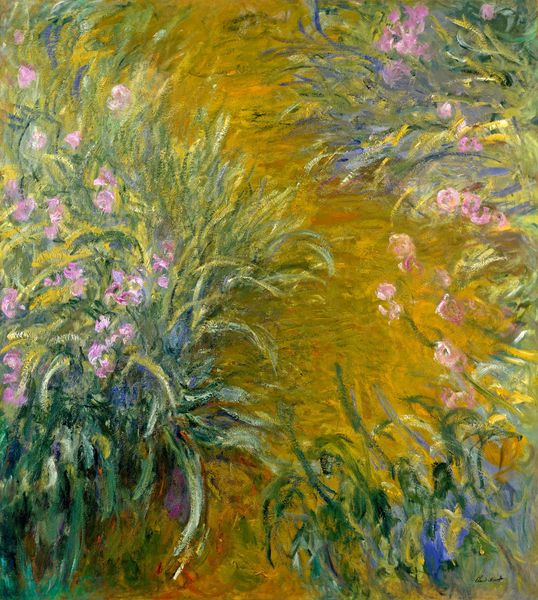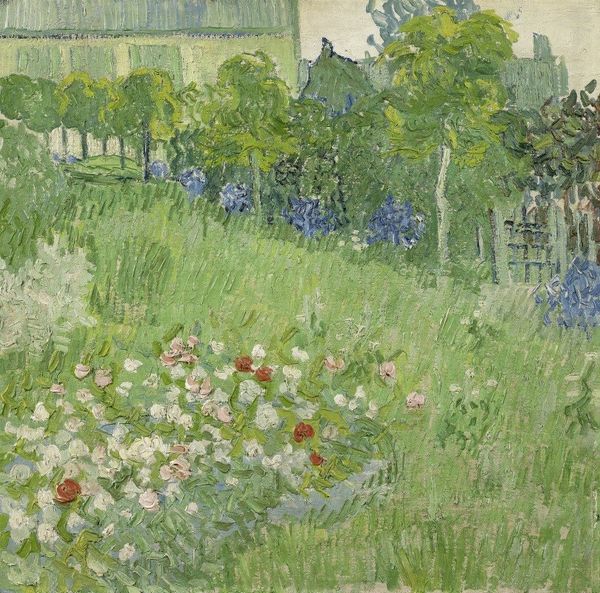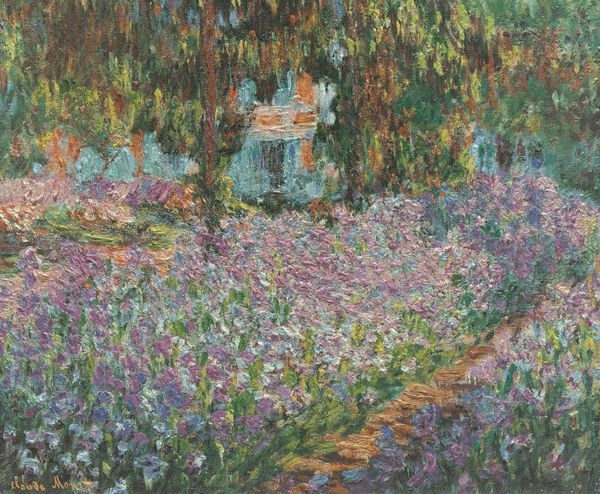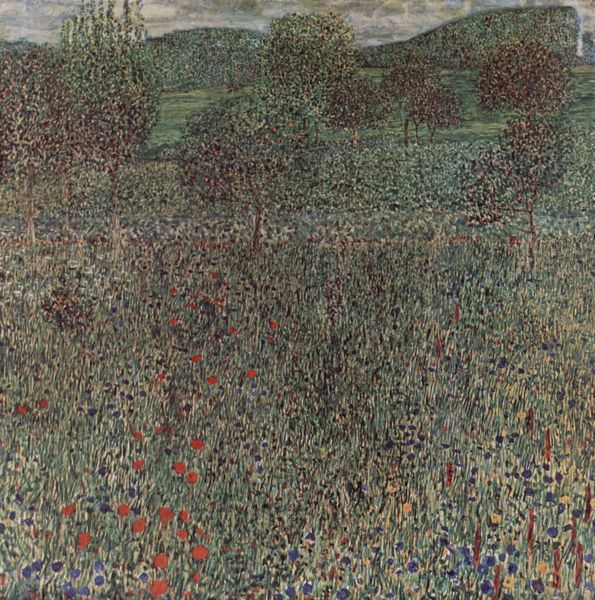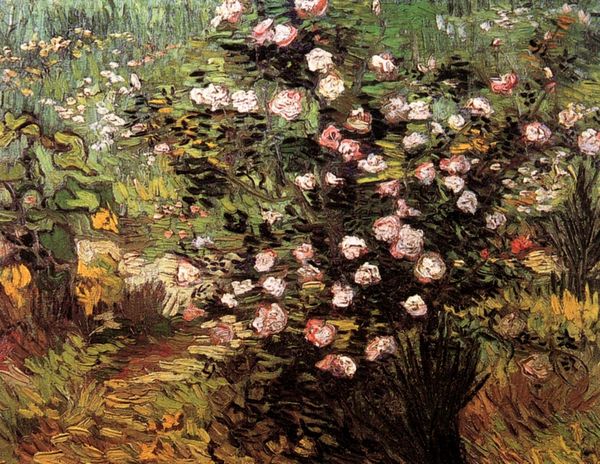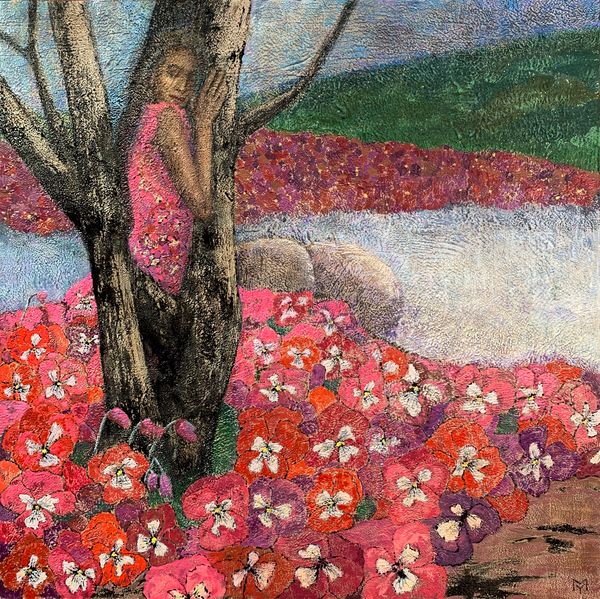
painting, oil-paint, impasto
#
garden
#
art-nouveau
#
painting
#
oil-paint
#
landscape
#
flower
#
impasto
#
symbolism
Copyright: Public domain
Editor: This is Gustav Klimt's "Italian Horticultural Landscape," painted in 1913. It’s oil paint on canvas, and it feels…lush, almost overwhelmingly so. What do you see in this piece, in terms of the image itself? Curator: Klimt presents the garden not merely as a physical space but as a potent symbol. He seems to compress space, abstracting elements and denying us clear perspective lines. Are you reminded of tapestries, the weaving together of experiences, memories, dreams? Editor: I do see that weaving effect now that you mention tapestries. The image definitely feels compressed, almost flattened. What's the symbolic importance of this effect, and maybe even, the specific choice of flowers? Curator: Think of the garden as a mirror reflecting something about ourselves. A place where nature is both cultivated and wild. A place that can heal. Consider also that, across cultures, flowers have long been potent symbols – roses linked to love, passion, and sometimes even mortality. What memories, what associations, do these blooms evoke for you? Editor: Well, personally, roses remind me of my grandmother's garden. I never thought of it as something… psychological, I guess. I considered them pretty, and colorful, but never loaded with meaning. Curator: Precisely. Klimt taps into this reservoir of collective and personal memories. His impasto technique – the thick application of paint – further intensifies the sensory experience, almost inviting you to touch, to feel the weight of these symbolic forms. He invites us into not only his memory, but the viewers personal memory as well. Editor: That's really changed my perspective. Seeing the cultural symbols really deepened my appreciation for this painting. Curator: Indeed, viewing it as a portal into our own deeply felt impressions adds another layer. Each brushstroke echoes within.
Comments
No comments
Be the first to comment and join the conversation on the ultimate creative platform.
